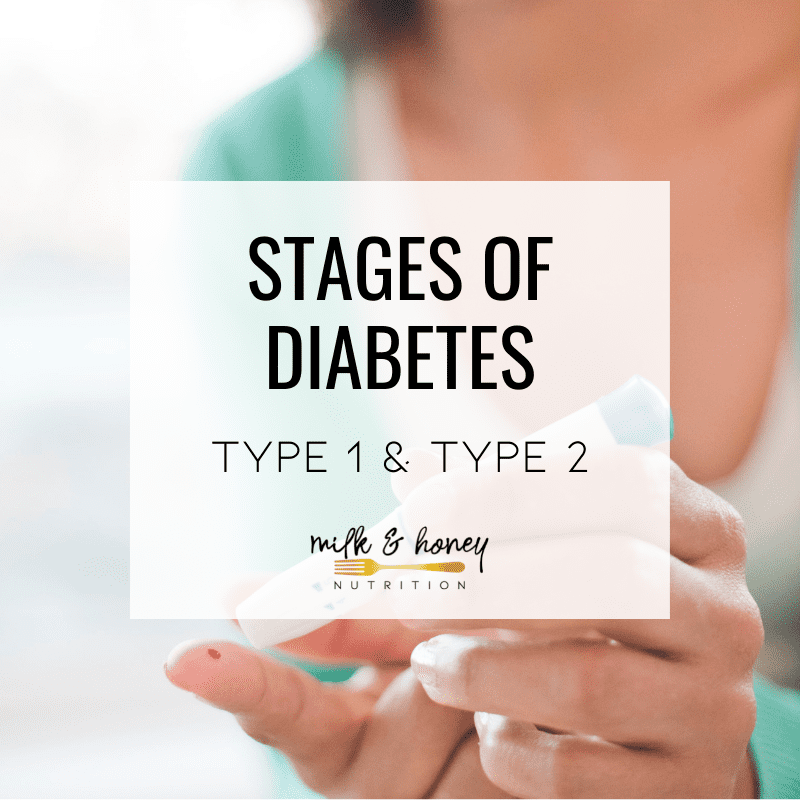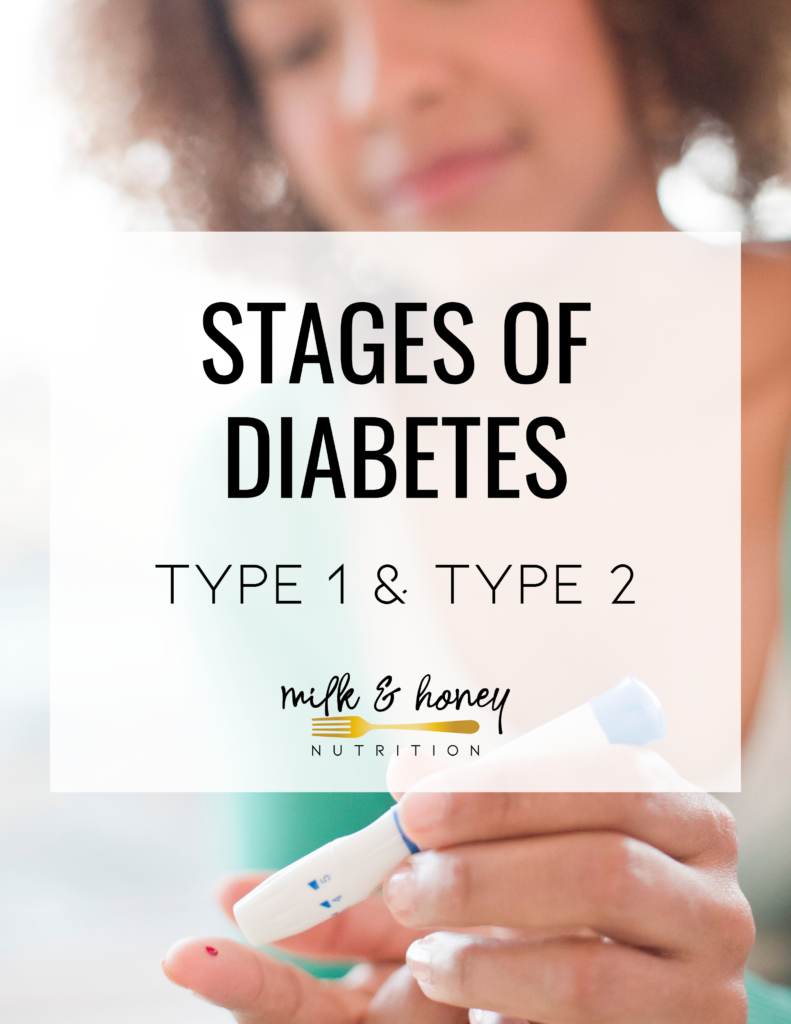
Are you familiar with the various stages of diabetes in type 1 and type 2 diabetes?
There are several stages associated with both type 1 and type 2 diabetes progression respectively. If you are navigating the stages of diabetes for yourself or a loved one, you’ve come to the right place.
What is diabetes?
First, let’s review what diabetes is before jumping into the stages. Diabetes is a term used broadly to refer to type 1, type 2, type 1.5, gestational diabetes, and other types. Diabetes occurs when the body has difficulty regulating blood sugar levels.
- Type 1 diabetes is an autoimmune condition where the body does not produce insulin as a result of the immune system attacking the insulin-producing beta cells in the pancreas.
- Type 2 diabetes is a metabolic condition where the body still produces insulin yet has trouble using insulin efficiently, leading to elevated blood glucose levels.
Check out our Diabetes 101 page more for in-depth information on the basics of diabetes.
How many stages of diabetes are there?
There are four stages associated with type one diabetes, including pre-stage 1, stage 1, stage 2, and stage 3.
In type 2 diabetes, there are also four stages, yet these stages differ and include insulin resistance, pre-diabetes, type 2 diabetes, and type 2 diabetes with complications.
Early stages of type 1 diabetes
The beginning stages of type 1 diabetes include pre-stage 1, stage 1, and stage 2. There are no symptoms present during the early stages of type 1 diabetes. However, during these early stages, a progressive attack occurs on the beta cells in the pancreas due to an increase in autoimmune antibodies.
If you have an increased risk of developing type 1 diabetes, talk to your doctor about regular autoantibody screening.
Type 1 diabetes progression
Common symptoms associated with type 1 diabetes that are typically not experienced until stage 3 include the following:
- Frequent Urination
- Excessive Thirst
- Excessive Hunger
- Fatigue
- Blurry vision
- Unintentional and unexplained weight loss
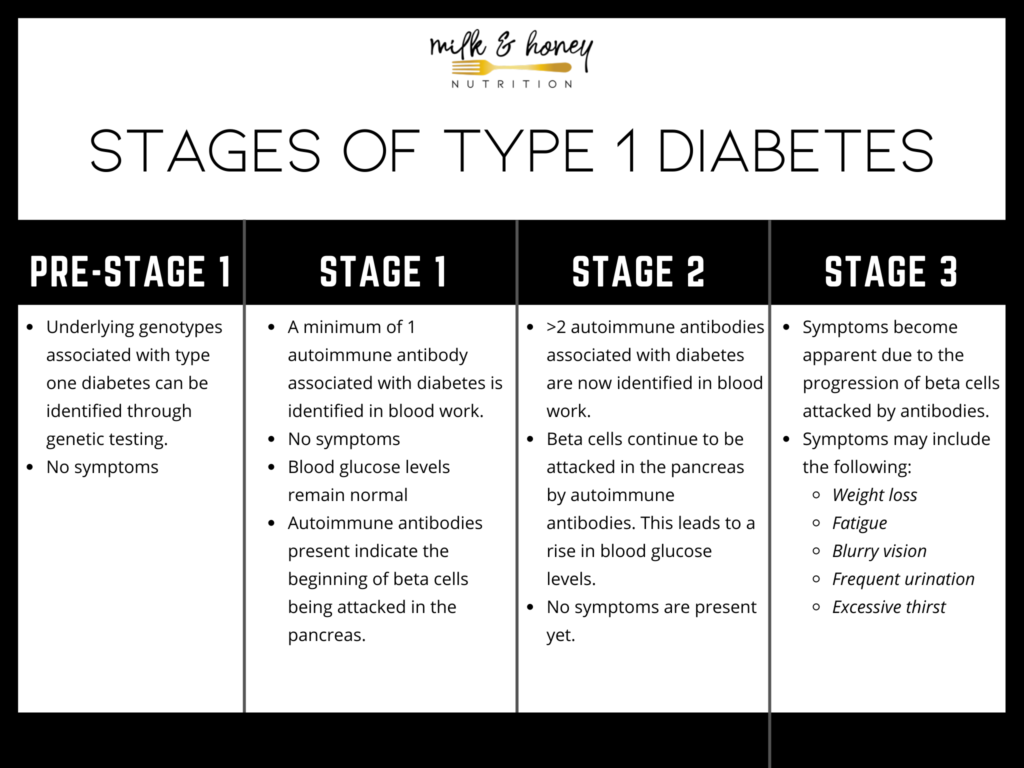
Stages of type 2 diabetes
There are four stages associated with type 2 diabetes.
The first stage of type 2 diabetes is referred to as the “molecular stage,” “impaired insulin sensitivity,” or more commonly, “insulin resistance.” During the insulin resistance stage, muscle, fat, and the liver start to not respond to the hormone insulin. This makes it more difficult for glucose to enter your body’s cells. As a result, our pancreas works overtime to compensate by making more insulin to let glucose into cells and regulate blood glucose levels.
After insulin resistance, the next stage of type 2 diabetes is “pre-diabetes,” which is sometimes referred to as “impaired glucose tolerance.” Pre-diabetes is when blood glucose levels become higher than normal yet are not considered high enough for a type 2 diabetes diagnosis. This diagnosing criteria for pre-diabetes include the following:
- Hgb A1C of 5.7 – 6.4 %
- Fasting Plasma Glucose 100 – 125 mg/dl
- Oral Glucose Tolerance Test 140 – 199 mg/dl
The American Diabetes Association (ADA) recommends implementing lifestyle changes regarding food choices and physical activity to help prevent or delay type 2 diabetes diagnosis after receiving a pre-diabetes diagnosis.
Check out our free blood sugar friendly recipes that add fat, fiber, and protein to your meals and snacks and The Easy Diabetes Cookbook, and The Easy Diabetes Desserts Cookbook.
Progression of type 2 diabetes
When pre-diabetes progresses into the next stage, type 2 diabetes is diagnosed as blood sugar levels have continued to rise within the type 2 diabetes range. The diagnosing criteria for type 2 diabetes include the following:
- A1C > 6.5%
- Fasting Plasma Glucose > 126 mg/dl
- Oral Glucose Tolerance Test > 200 mg/dl
End stage diabetes (type 2)
Lastly, the fourth stage of type 2 diabetes is “type 2 diabetes with complications”. Type 2 diabetes with complications is also sometimes referred to as “end stage diabetes.” It is vital to work with medical professionals to help understand and manage diabetes through medication and lifestyle changes to help delay the progression of type 2 diabetes complications.
Some complications of diabetes (both type 1 and type 2) include ESRD (end-stage renal disease), neuropathy, nephropathy, retinopathy, and increased risk for stroke and cardiac events.
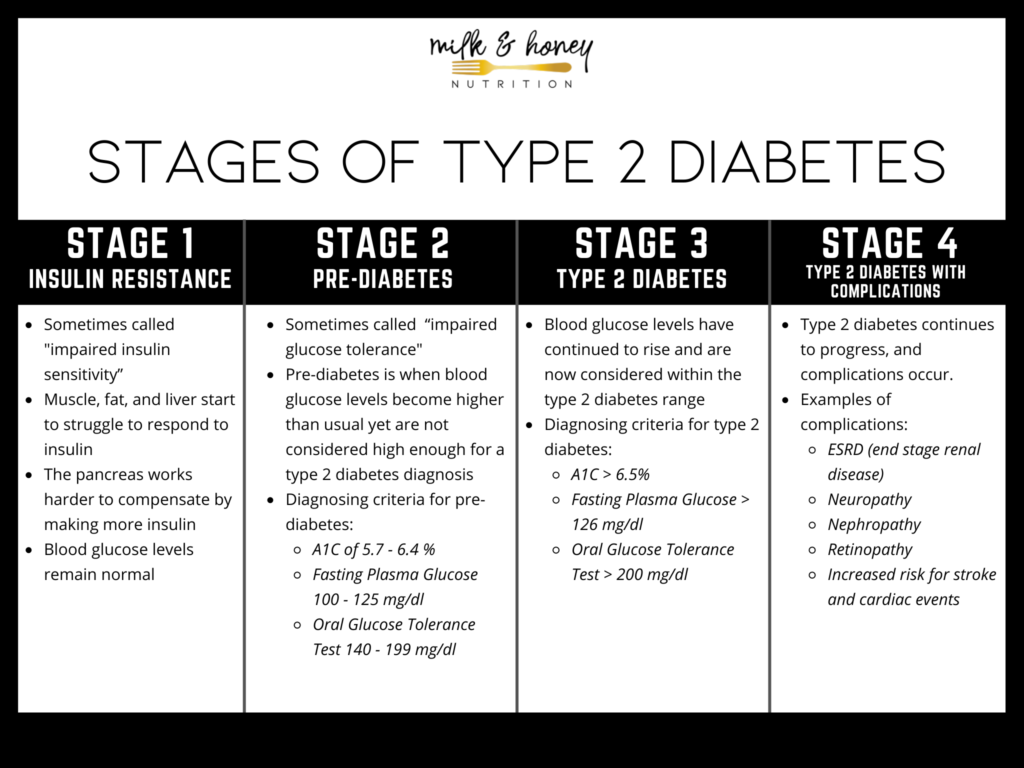
Type 1 and Type 2: diabetes stages chart comparison
If you’d like to see the different stages of each type of diabetes side by side, take a look at this stages of diabetes chart comparison.
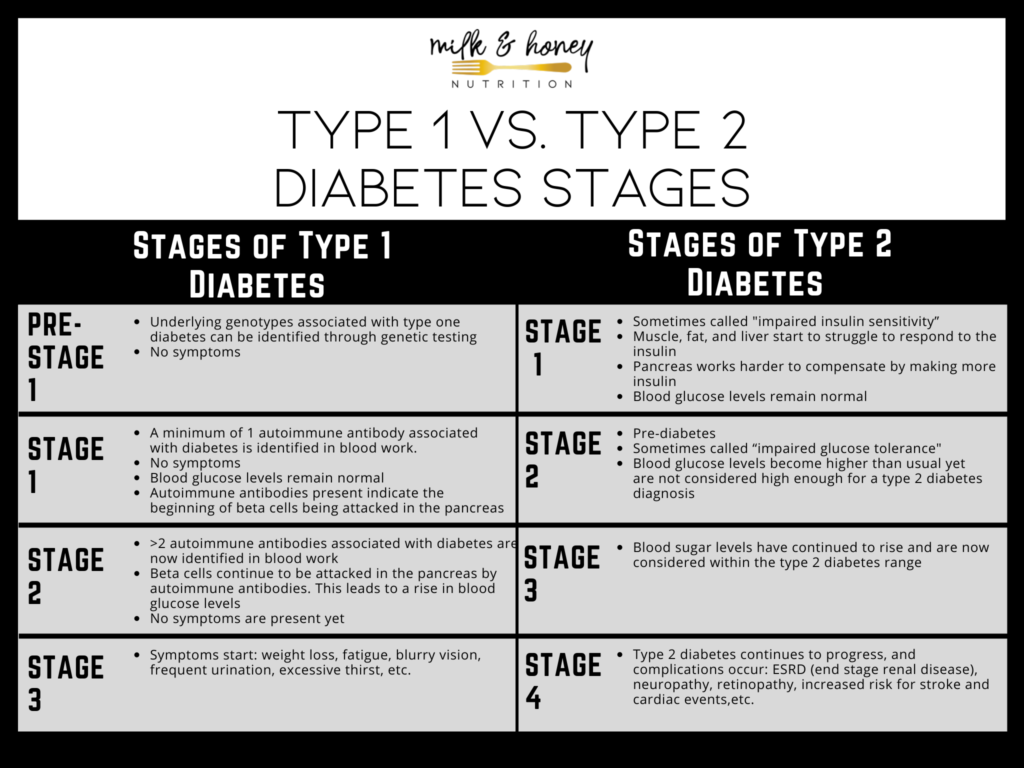
Other helpful diabetes resources:
- American Diabetes Association (ADA)
- Endocrine Society
- JDRF
- American Association of Clinical Endocrinologists (AACE)
- Staging Presymptomatic Type 1 Diabetes: A Scientific Statement of JDRF, the Endocrine Society, and the American Diabetes Association
